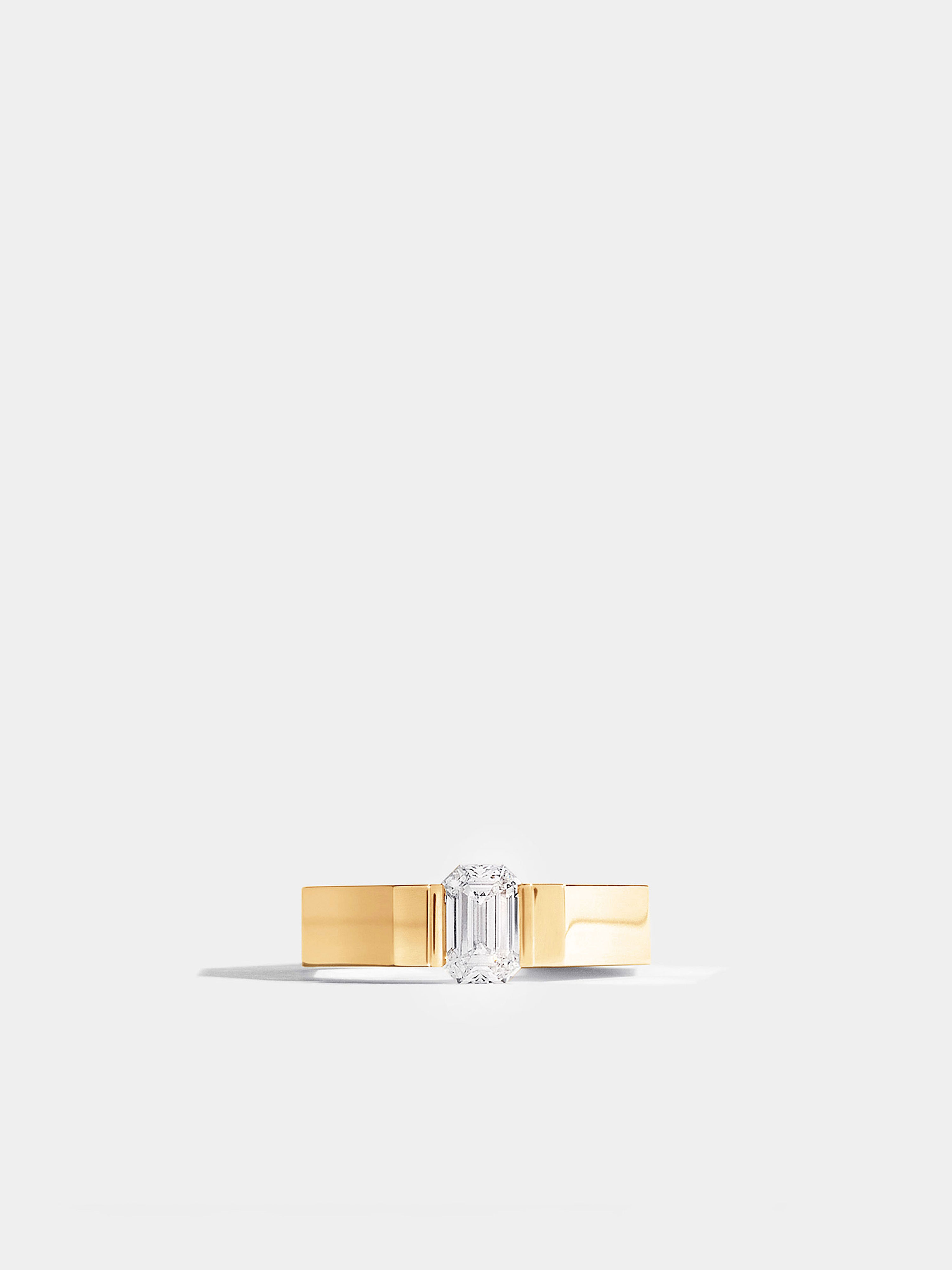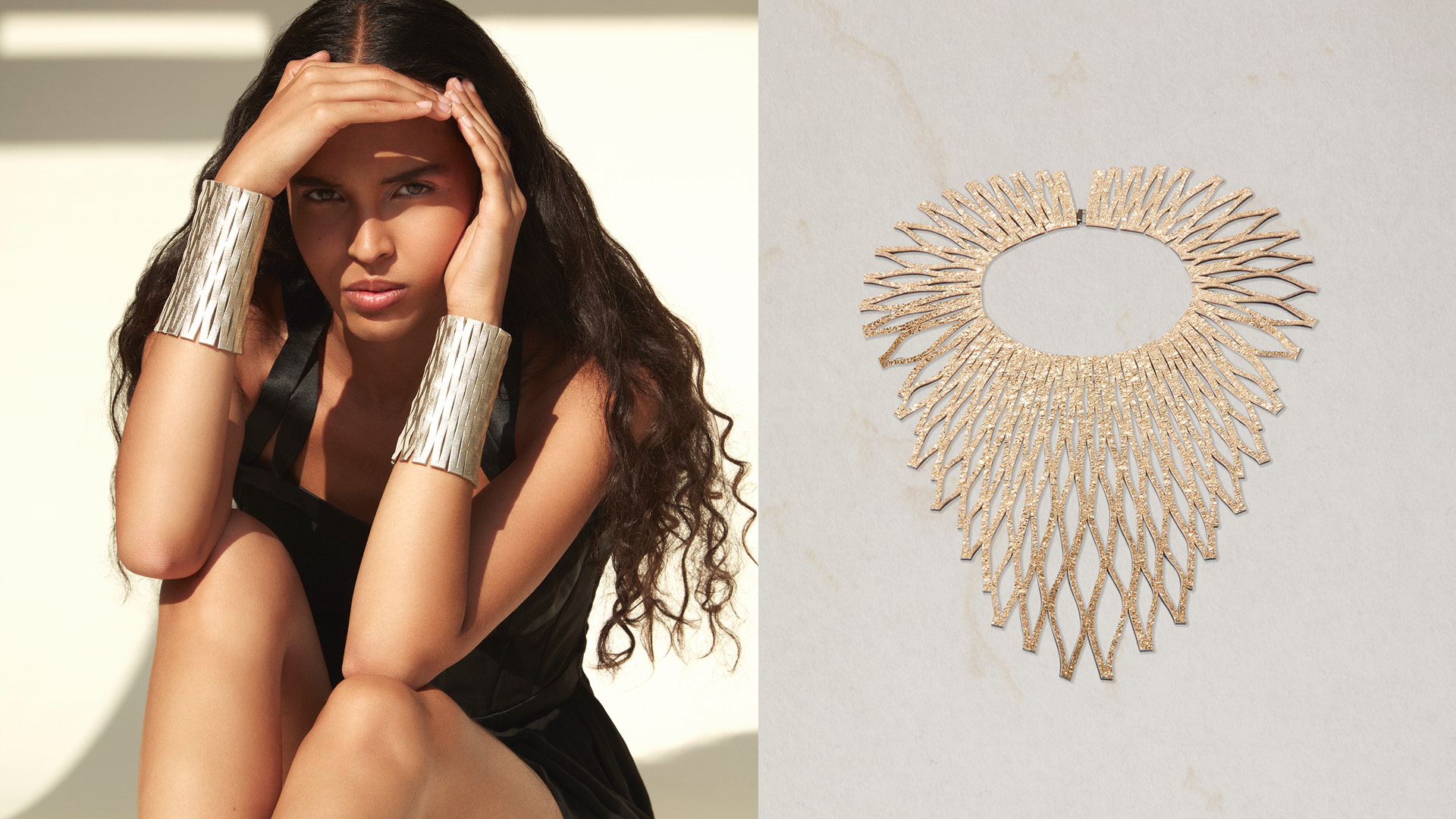What are lab-grown diamonds? Experts explain
Man-made gems are more popular than ever. But how do they differ from natural diamonds?

Since lab-grown diamonds started being used for jewellery in the 1980s, their popularity has skyrocketed. Not only are they billed as a more sustainable alternative to ‘natural diamonds’, man-made gems cost a fraction of the price (to the tune of 80 percent less). But there are still questions surrounding lab-grown diamonds, and many would-be buyers are unwilling to make the leap from mined ones.
In this guide, we’ll consider the rise of lab-grown diamonds as a sustainable, ethical and affordable addition to your jewellery collection. Experts Howard Levine (managing director of diamond trading platform Diamnet and a member of the Gemological Institute of America (GIA)), Sally Spencer (gemologist and fellow of the Gemmological Association of Great Britain), and Eric Emms (gemologist and trader in precious stones) will address frequently-asked questions on the topic, and we will highlight the best brands for lab-grown diamonds.
What are lab-grown diamonds?
Lab-grown diamonds are diamonds that are man-made rather than mined. While mined diamonds are formed in the earth over billions of years, lab-grown diamonds are created in laboratories using either the chemical vapor deposition (CVD) or high-pressure high temperature (HPHT) method. Lab-grown diamonds have been used for industrial purposes since the 1950s, but it was only recently that the quality became good enough to use them in jewellery.
Are lab-grown diamonds as good as 'real' diamonds?
There is no physical, chemical or optical difference between a lab-grown diamond and a mined diamond – the only difference is how they came into being.
In fact, in 2018, the US Federal Trade Commission removed the word ‘natural’ from the definition of a mined diamond, acknowledging the lack of scientific difference between these stones and those created in a lab. ‘I am a qualified gemologist and wouldn’t be able to tell the difference between a mined and a lab-grown diamond using a 10x loupe,’ says Sidney Neuhaus, co-founder of jeweller Kimai.
The lab-grown sector has been gaining traction for decades, but the last five years have seen a boom. Levine attributes this to ‘a rapid transformation in quality (and price)’.
Lab-grown diamonds vs. natural diamonds: Which are more ethical?
Mining diamonds comes with sustainability issues including habitat destruction, land degradation and water pollution. Historically, though, the biggest problem facing diamond mining has been ethical, with reports of labour exploitation, disruption to local communities and mined diamonds being sold to fund conflicts. Lab-grown diamonds are thought to largely bypass these issues.
Receive our daily digest of inspiration, escapism and design stories from around the world direct to your inbox.
But it’s not that simple, experts say. Levine points out that many mined diamond suppliers are now fully-traceable: ‘The industry is now heavily regulated, contributing to community development and economic growth in mining regions.’
Just as diamond mining is not the industry that it once was, the process of growing diamonds in a lab should not be viewed as a silver bullet, says Emms. ‘Lab-grown diamonds are grown mostly in China and India, countries where coal burning remains the major method of power production.’
‘While there are some companies that make conscious decisions about how their energy is produced, others grow diamonds using energy produced by burning fossil fuels,’ says Spencer, adding that lab-grown diamonds do, in fact, ‘require mined components such as cobalt, nickel, iron, methane and/or hydrogen’.
On the flip side, again, ‘significant progress is being made in the lab-grown diamond industry’, according to Levine: ‘The adoption of renewable energy is expanding, and independent certifications like SCS Global and SMETA are verifying sustainable practices.’
How much do lab-grown diamonds cost?
Because lab-grown diamonds are easier to produce, they are comparatively abundant and therefore cheaper. The last five years has seen a rapid decline in their price due to an increased availability of high-quality stones; lab-grown diamonds now cost under 20 percent of natural diamonds, according to Levine. Spencer adds that a 5mm lab-grown sapphire currently costs around £6, while an equivalent stone mined in Sri Lanka would cost around £1000.
If lab-grown diamonds are less valuable, it follows that they should not be viewed as investments in the same way as natural diamonds. Whether or not lab-grown stones are right for you, therefore, will depend on your motive for buying them. ‘Natural diamonds remain a portable store of value,’ says Emms. ‘The prices of artificial diamonds will continue to plummet as production ramps up, so their resale value is negligible – only the value of the precious metal in the jewel is considered.’
Some of Wallpaper’s favourite lab-grown diamond brands
Swarovski

Daniel Swarovski’s desire to make diamonds more accessible was the original intention behind Swarovski crystals; the 2018 debut of the brand’s laboratory-created diamonds, then, was the logical next step. Initially, it was a controversial one. ‘There were challenges in convincing the retailers to start with this completely new material, as there was a lot of uncertainty in the market,’ the Swarovski says. Now, the brand is seeing an increased acceptance of laboratory-created diamonds in that most emotional of investments: an engagement ring.
Jem

Parisian brand Jem (‘jewellery ethically minded’) sources most of its lab-grown diamonds from Diamond Foundry, which ‘[works] essentially with renewable energies, and is the only producer to be carbon neutral-certified’, explains Dorothée Contour, Jem’s CEO. The brand chose to work with lab-grown diamonds due to the lack of certifications around diamond mining, Contour says, adding that ‘we cannot turn a blind eye to what is happening in most mines: high-risk working conditions, child labor, human rights violation and significant environmental damages’.
Kimai

Putting into practice knowledge gleaned from their diamond trader and jeweller families, Jessica Warch and Sidney Neuhaus founded Kimai in 2018. Lab-grown diamonds and 24 kt recycled gold are integral to the brand, which launched a collection of lab-grown diamond engagement rings in 2020. Kimai sources lab-grown diamonds directly from manufacturers, ‘and most of them use renewable energy’, says Neuhaus.
Vrai

Vrai was acquired by Diamond Foundry in 2016, which ‘is the only diamond producer in the world that is certified carbon neutral and utilises hydropower for zero emissions’, says Ye-Hui Goldenson, the brand’s PR director. Diamond Foundry is driving much of the innovation in the lab-grown industry, having developed ‘a proprietary plasma reactor that grows diamond while maintaining a carbon neutral process’. For Goldenson, there is no doubt that lab-grown diamonds are a more sustainable alternative: ‘Mining has a larger environmental footprint than any other human activity. For a single carat of diamond, approximately 250 tons of earth have to be dug up, 2,011 ounces of air pollution is released and 143 lbs of carbon dioxide is emitted.’
Blue Nile

Blue Nile stresses the affordability, and therefore accessibility, of its lab-grown diamonds, with its synthetic stones priced at $800 per carat – approximately 90 percent less than mined diamonds of comparable quality. These lab-grown diamonds are certified by the International Gemological Institute (IGI) and GIA, and come in a variety of colours including some that, in mined form, are extremely rare and expensive.
Pandora

Levine credits Pandora with bringing lab-grown diamonds into the mainstream and ‘broadening consumer acceptance’: ‘The brand’s strategic adoption of lab-grown diamonds, coupled with effective advertising campaigns emphasising accessibility, has propelled the sector's growth.’ Since 2022, Pandora’s synthetic stones have been grown, cut and polished using only renewable energy, and set in jewellery made from 100 percent recycled silver and gold.
Matilde Jewellery

Matilde exclusively uses lab-grown diamonds; these are created using the HPHT method which, claims the brand, produces ‘a fifth of the carbon emissions of mined diamonds’. It only uses recycled metals in its jewellery, sourcing materials from ‘trusted’ suppliers that hold various sustainability certifications, including SCS Recycled Metal Certificates and Certified Climate Neutral status.
Smiling Rocks

Smiling Rocks produces its diamonds in its own facility using ‘generic electricity’, which, it says, makes them even more affordable by cutting out middle men. It is a member of 1% for the Planet, pledging to donate one percent of its diamond revenue to environmental causes. The brand also provides IGI certification for larger diamonds as a representation of quality.
Grown Brilliance

Grown Brilliance only sells lab-grown diamonds, sourcing these from carbon-neutral labs. But the use of synthetic stones is only one aspect of its sustainability strategy: the brand uses 96 percent recycled gold – with the goal of increasing this to 100 percent this year – and all packaging is made from recyclable materials.
Anna Solomon is Wallpaper’s digital staff writer, working across all of Wallpaper.com’s core pillars. She has a special interest in interiors and curates the weekly spotlight series, The Inside Story. Before joining the team at the start of 2025, she was senior editor at Luxury London Magazine and Luxurylondon.co.uk, where she covered all things lifestyle and interviewed tastemakers such as Jimmy Choo, Michael Kors, Priya Ahluwalia, Zandra Rhodes, and Ellen von Unwerth.
-
 ‘I want to bring anxiety to the surface': Shannon Cartier Lucy on her unsettling works
‘I want to bring anxiety to the surface': Shannon Cartier Lucy on her unsettling worksIn an exhibition at Soft Opening, London, Shannon Cartier Lucy revisits childhood memories
-
 What one writer learnt in 2025 through exploring the ‘intimate, familiar’ wardrobes of ten friends
What one writer learnt in 2025 through exploring the ‘intimate, familiar’ wardrobes of ten friendsInspired by artist Sophie Calle, Colleen Kelsey’s ‘Wearing It Out’ sees the writer ask ten friends to tell the stories behind their most precious garments – from a wedding dress ordered on a whim to a pair of Prada Mary Janes
-
 Year in review: 2025’s top ten cars chosen by transport editor Jonathan Bell
Year in review: 2025’s top ten cars chosen by transport editor Jonathan BellWhat were our chosen conveyances in 2025? These ten cars impressed, either through their look and feel, style, sophistication or all-round practicality
-
 All eyes on Greek jewellery brand Lito as it launches bold new amulets to mark its 25 years
All eyes on Greek jewellery brand Lito as it launches bold new amulets to mark its 25 yearsStriking amulets, seductive stones and secret messages characterise Lito's striking new anniversary collection, an extension of its ‘Tu es Partout’ series
-
 The best layering necklaces for an elevated yet casual look
The best layering necklaces for an elevated yet casual lookHow to mix, match and stack jewellery for the ultimate high-energy, low-effort style
-
 Late summer jewels: what to wear at Golden Hour
Late summer jewels: what to wear at Golden HourLate summer signals a jewellery style-shift. These independent designers have got it covered
-
 Jewellery designers share their most precious personal pieces
Jewellery designers share their most precious personal piecesA host of jewellers give us a peek at the jewellery which brings them joy and solace
-
 Hair jewellery to covet and collect
Hair jewellery to covet and collectToday’s hair jewellery is both practical and pretty. We're pinning our hopes on these simple and elegant accessories
-
 Andreas Kronthaler’s costume jewellery for Vivienne Westwood is fun, flirty and fabulous
Andreas Kronthaler’s costume jewellery for Vivienne Westwood is fun, flirty and fabulousAndreas Kronthaler’s new jewellery draws on romantic and theatrical motifs
-
 Fope’s flexible gold chains rethink a classic design
Fope’s flexible gold chains rethink a classic designElasticity meets elegance in Fope’s new jewellery collection, ‘Luna’
-
 Get personal with Bea Bongiasca’s colourful initial necklaces in enamel
Get personal with Bea Bongiasca’s colourful initial necklaces in enamelBea Bongiasca’s ‘B Colour’ collection of initial necklaces brings a chic modernity to personalised jewellery